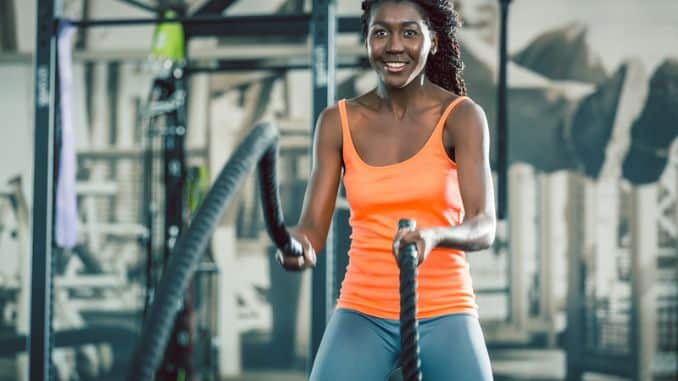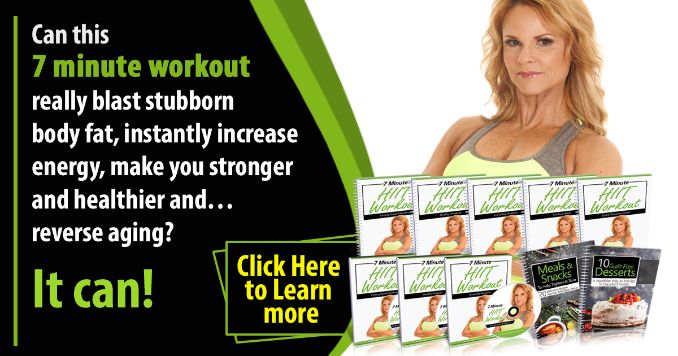High intensity workouts can have several benefits, such as increasing metabolism and improving muscle protein synthesis. This type of workout is designed to help you burn more calories in a shorter period.
Working out at a high intensity is not as easy as it may seem. It takes time, patience, and dedication to see the payoff of an intense workout. But don’t let that discourage you! When you work out hard, your body releases endorphins which make you feel good about yourself and give you a natural high! Studies show that people who work out harder have more muscle mass, less fat, and better blood sugar levels than those who do not exercise intensely.
CLICK HERE to watch the YouTube video
What you need to know about High Intensity
Intensity is a measure of how hard you’re working out. Technically, it’s defined as “the amount or degree to which something exists.” The harder the effort, the higher your intensity will be, and vice versa for lower levels of exertion or control over movement.
Most people think they need to go all out when working out, but this isn’t always true because if your form breaks down or there’s an injury, that can cause more problems and make things harder on yourself overall.
The Benefits of Adding High Intensity to Your Workout
Intensifying your exercise routine is one way to get the most out of it while giving yourself an improved lifestyle that lasts beyond just getting in shape!
When you add intensity, it becomes much easier for muscles that are weak or underactive compared to other muscle groups on average to take up space and grow stronger due to both their size and blood supply, which helps them get larger faster! You’ll be able to strengthen all areas of your body equally without limitations.
How to Increase Intensity While Staying Injury-Free
A regular exercise program will start as something you do every other day or occasion. But when it becomes a habit, try adding an extra session each week or twice a month! This small change in frequency increases the intensity of your workouts while preventing injuries from happening too often. You’ll be able to resist getting sore after each session because that would take away from all those important muscles they’ve been building throughout their lifetime and prevent any future progress if there isn’t compensation by growing new ones instead.
What is Adaptation, and How Does It Work?
The human body can adapt and survive high-intensity exercise because it has certain mechanisms that allow you to exercise at high intensity. Your body needs to adapt for the workout session to be effective and enjoyable. Our muscles need time and energy that can’t come from lower-intensity workouts, so they get their nutrients by converting fat into sugar, providing instant fuel while letting us feel relaxed after a tough workout!
Athletes who train at a more intense level will notice their heart rate increase by about five beats per minute compared with someone just sitting on the couch, but how does your average person know if they can handle an activity like running or hiking? The key difference between those in less active lifestyles versus people who work out regularly could be “high-intensity endurance,” which refers specifically to activities requiring large amounts over long periods without interruption, such as jogging continuously back and forth across town while listening raptly every few minutes.
How to know your level of intensity
Exercising at the correct intensity can help you get the most out of your physical activity — ensuring you’re not pushing too hard or too little.
- How do you feel? Exercise intensity is a subjective measure of how hard physical activity feels to you while you’re doing it — your perceived exertion. Your perceived exertion level may differ from what someone else feels doing the same exercise. For example, what feels to you like a hard run can feel like an easy workout to someone who’s more fit.
- Your heart rate. Your heart rate offers a more objective look at exercise intensity. The higher your heart rate during physical activity, the higher the exercise intensity.
Ways to Prevent Injuries When Doing Intense Exercise
When working out, it’s important to be aware of the common injuries. Taking a few precautions can reduce your risk of injury and get the most out of your workout. Here are four tips for avoiding injuries when doing intense exercise:
- Warm up beforehand by going outdoors for 5 minutes, then move on to low-impact exercises such as walking lunges with alternating knee lifts (which will help prepare muscles). If possible, try adding light jogging at least once per week too!
- Keep a cool head! Don’t get too excited about your workout, and make sure you can maintain good form for at least 10 minutes without making any mistakes in order not to have an accident that could happen later on during practice or competition.
- Take breaks from working out after 20-30 min.
- Don’t lift heavier weights than what’s allowed.
- Always use proper technique (elevation, contraction type/size).
- Drink water before starting the activity and Hydrate afterward.
Conclusion:
Working out at a high intensity is one of the best ways to get in shape. But it can be difficult to maintain that focus level and not overexert yourself if you’re new to this exercise routine or just starting back up after some time off.
The key to staying injury-free is understanding your body and how it reacts. Be sure to know when you’re working too hard or if that soreness means something more serious, like a muscle tear. For the most part, though, following these simple tips should help keep injuries at bay so you can enjoy high-intensity workouts without worry.
A few more tips for working out at a high intensity are to keep your weights light and move quickly. When you feel like the workout is getting too easy, it’s time to increase the weight or add another rep.
If you know of someone that would be great to interview, please do email me.
Or, if you have an injury story or something that would benefit health and fitness professionals, please contact me.
Take care, and have a great day.
Rick Kaselj, MS
.



